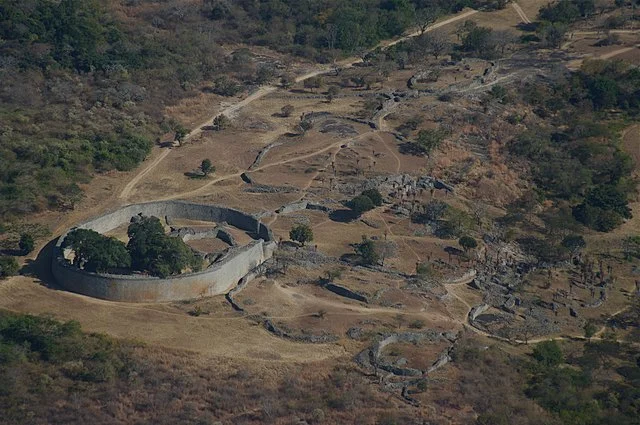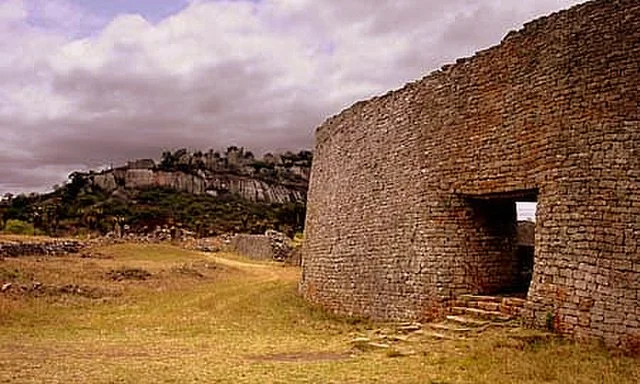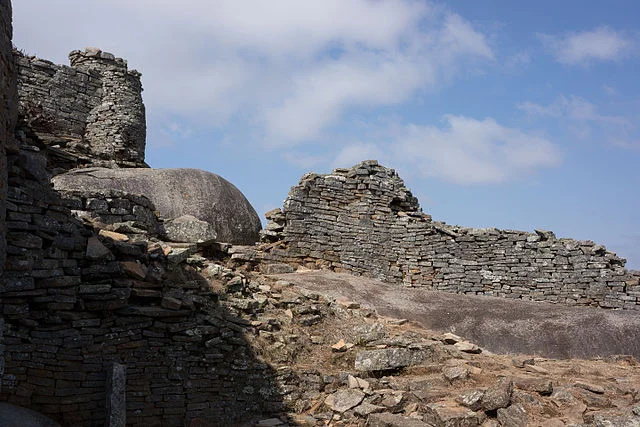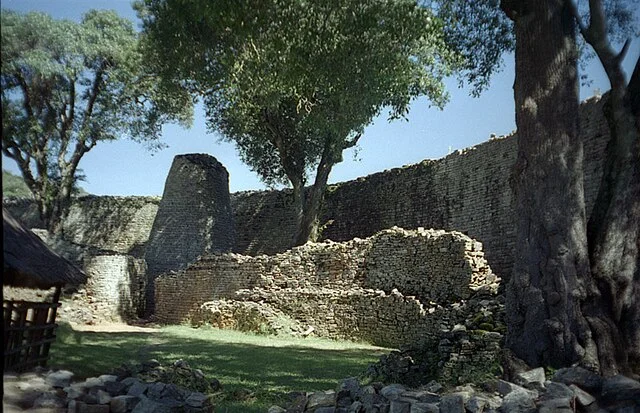Great Zimbabwe is a medieval city in southeastern Africa, located in modern-day Zimbabwe. This stone-built city was the capital of the Kingdom of Zimbabwe during the Late Iron Age. It flourished between the 11th and 15th centuries AD, making it one of the most significant archaeological sites in Africa.
Get your dose of History via Email
The Rise of Great Zimbabwe

Great Zimbabwe emerged as a major political and trading center around the 11th century AD. The city developed as a center for the Shona civilization, known for its skilled craftsmen, traders, and farmers. The city’s rulers controlled regional trade networks, which connected the African interior to coastal trading ports. Gold, ivory, and other resources were exchanged for goods from Arabia, India, and China.
Architectural Features

The most notable feature of Great Zimbabwe is its impressive dry stone masonry. The walls of the Great Enclosure, one of the site’s largest structures, reach up to 36 feet (11 meters) in height. These walls were constructed without mortar, a technique known as dry-stone construction. The stones were carefully fitted together, creating massive, stable walls.
There are three main architectural complexes: the Hill Complex, the Great Enclosure, and the Valley Complex. The Hill Complex is the oldest section and likely held religious significance. The Great Enclosure, believed to be used by royalty, includes a conical tower whose function remains unclear. Finally, the Valley Complex consists of various smaller residential and functional structures.
Social and Political Organization
The rulers of Great Zimbabwe controlled a vast territory through a centralized political system. Archaeological evidence suggests that the city was governed by a powerful elite who likely imposed taxes on surrounding areas. This leadership, combined with control of trade, enabled the city’s growth and influence.
The city’s population likely reached between 10,000 and 20,000 people at its peak. The residents included farmers, artisans, and traders. The city’s economy was based on agriculture, cattle herding, and the trade of gold, copper, and iron.
Trade Networks
Great Zimbabwe was strategically located near key trade routes, which connected the African interior to the Swahili coast. Goods such as gold and ivory were exchanged for ceramics, glass beads, and textiles from distant lands. Archaeological finds include items from China, Persia, and India, evidence of its global trade connections.
This trade network helped the city accumulate wealth, which was likely used to maintain its elite class and fund large building projects. The wealth and prosperity of the city, however, also attracted the attention of rival groups.
Decline of Great Zimbabwe

By the 15th century AD, Great Zimbabwe began to decline. Several factors contributed to this downfall. Overgrazing and deforestation may have caused environmental degradation, making agriculture difficult. The depletion of local resources, especially gold, could have weakened its economic base. Additionally, shifts in regional trade routes may have diverted wealth away from the city.
Another contributing factor might have been internal power struggles or challenges to the ruling elite. By the late 15th century, Great Zimbabwe was largely abandoned.
Legacy
The legacy of Great Zimbabwe lives on in its influence over the region’s culture and politics. The Shona people, descendants of the builders of Great Zimbabwe, continued to dominate the region. The ruins of Great Zimbabwe remain a symbol of African heritage and achievement, offering insight into pre-colonial African societies.
In 1980, the country of Zimbabwe took its name from this historic site, recognizing its cultural importance. Today, Great Zimbabwe is a UNESCO World Heritage site, and it continues to be an important archaeological and historical monument.
Conclusion
Great Zimbabwe remains one of the most important archaeological sites in Africa. It offers a glimpse into the history and achievements of African civilizations before European colonization. The city’s impressive architecture, trade networks, and social organization demonstrate the complexity and richness of the region’s past.
Source:

